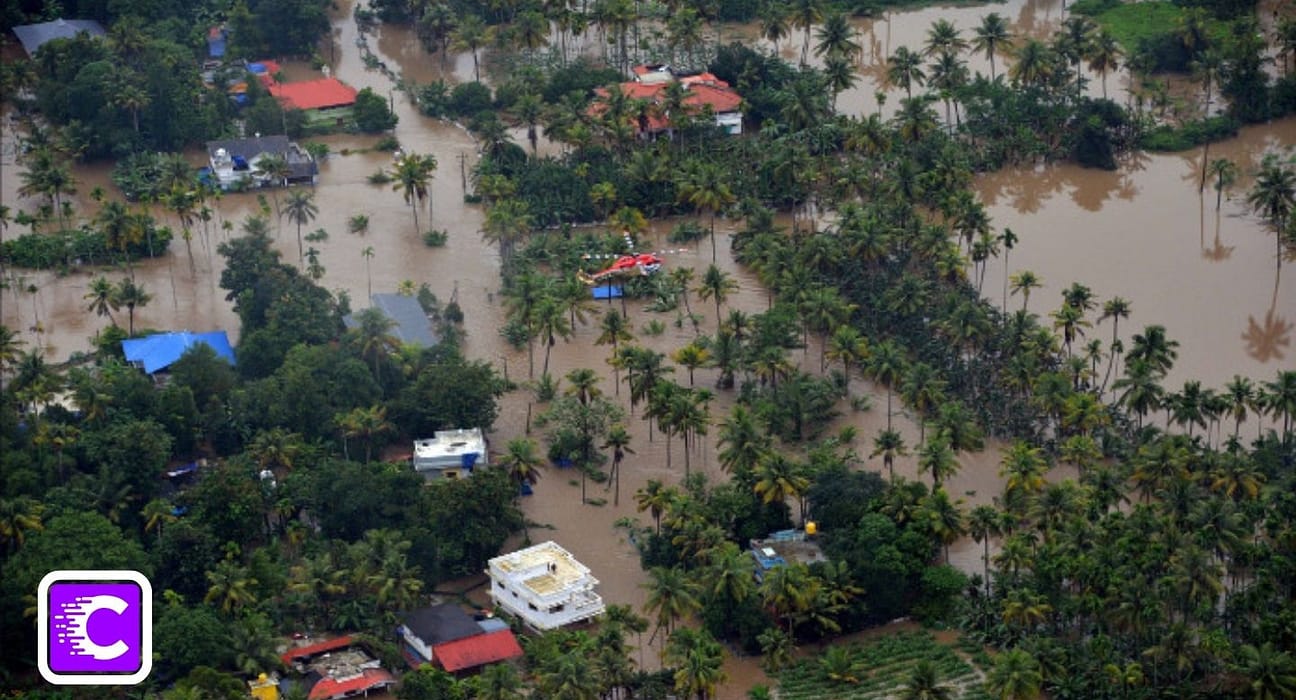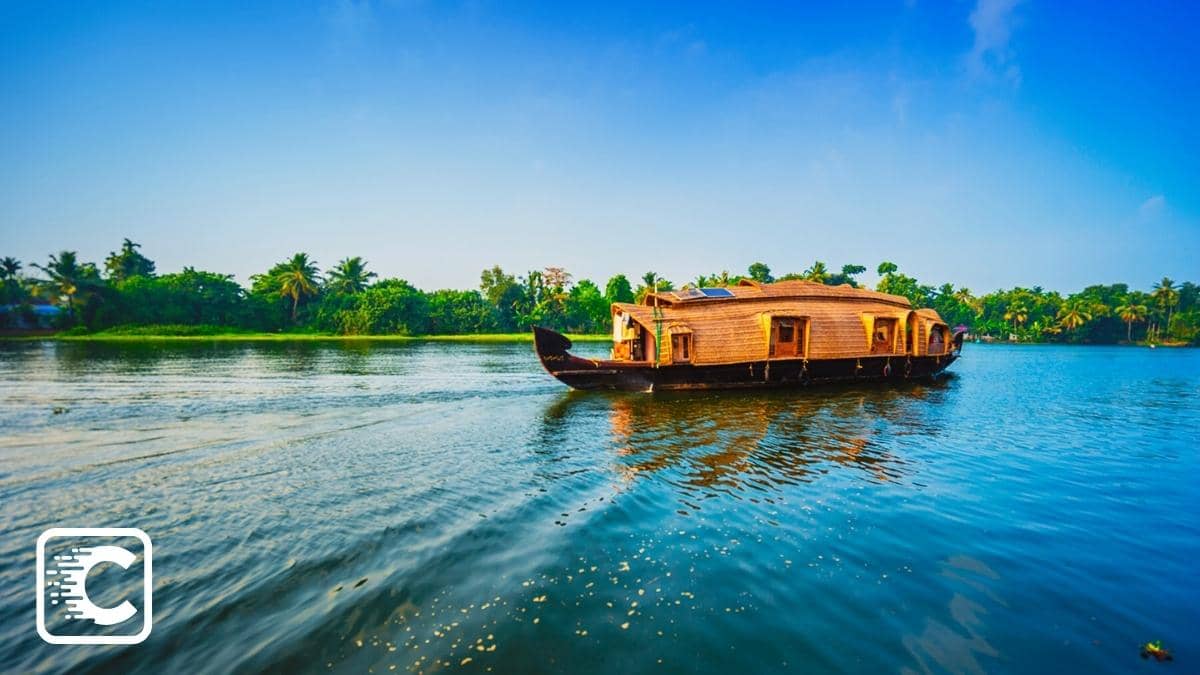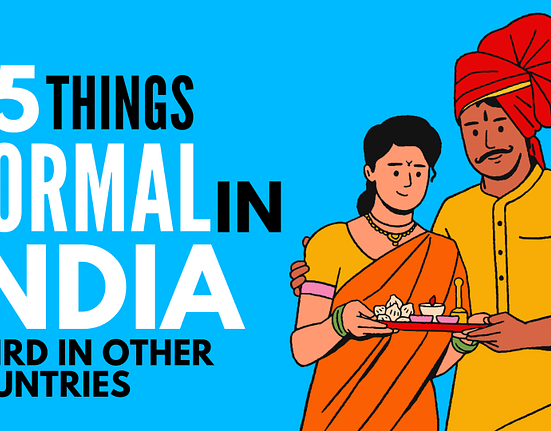Last updated on May 21st, 2024 at 12:18 pm
The Kerala floods in 2018 were triggered by ( heavy ) monsoon rains—leading to widespread flooding and landslides. The rapid rise in water levels submerged villages and displaced thousands due to the excessive rainfall.
The floods severely impacted the region’s topography, dense population and river network, complicating rescue efforts. Opening dam shutters exacerbated the situation, highlighting the vulnerability of densely populated areas to extreme weather events.
The devastating floods served as a (tragic) reminder of the need to prepare for extreme weather events in densely populated regions.
In this blog post, we will explore 61 facts about the Kerala flood of 2018, the biggest tragedy in Kerala
Source of Facts: The facts in this blog are based on reports and information from sources such as the Kerala State Disaster Management Authority, the Indian government, news agencies like the BBC and The Hindu, and organizations like the United Nations and Wikipedia.
Introduction
In the history of Kerala itself, the flood of 2018 is something that the people of Kerala never want to remember. Many families in the State of Kerala have lost their lives due to the extreme rainfall.
Two dead bodies, a mother and a five- or six-year-old daughter, were found in the rescue operation after the flood, bound to their chests and left for the world of death. This image is the world’s conscience itself being shoveled into the fiery furnace of pain.
Even today, Malayalis (Keralites) can only remember the memories of that dangerous flood with fear and pain.
Facts about Kerala Flood 2018
Here are some Kerala flood 2018 facts, including causes, casualties, how the people fought against it together, the aftermath, government interference, and the role of Keralites abroad.
So, let’s jump into it.
1. Cause of Flood: The Kerala flood disaster of 2018 was a result of high rainfall during the southwest monsoon season in July-August 2018. Besides, lack of coordination among inter-state dams, multiple cloudbursts, low atmospheric pressure, filling of fields with earth, and dam operators’ concern to maximize reservoir levels were identified as causes of the floods.

2. Historical Significance: The Kerala floods in 2018, labeled the worst in nearly a century by KSDMA, saw rainfall levels 37% above normal. During August 2018, Kerala got 821 mm of heavy rainfall, while the usual amount is 419.3 mm. The India Meteorological Department (IMD) labeled this difference as a “large excess.”
3. Impact of Heavy Rains: Starting in August 2018, the floods impacted all 14 districts of Kerala, hitting Idukki, Ernakulam, Thrissur, and Pathanamthitta the hardest.
4. Consequences: The floods affected over 5.4 million people, displacing more than 1.4 million to relief camps established statewide.
5. Flood Casualty Statistics: 483 people lost their lives due to the floods in Kerala as per the state government’s records. Chief Minister Pinarayi Vijayan stated that 483 people died, 14 were missing, and 140 were hospitalized.
6. Infrastructure damage: The KSDMA estimated around ₹25,000 crore ($3.6 billion) worth of damage to infrastructure, encompassing roads, bridges, and buildings.
7. Level 3 Calamity: The Indian government classified the floods as a “Level 3 Calamity,” enabling access to extra aid from the National Disaster Response Fund.
8. Community Efforts: The “Kerala Rescue” initiative, involving numerous civilians, fishermen, and volunteers, received widespread acclaim for its well-coordinated and altruistic actions in rescuing stranded individuals amidst the floods.
9. Role of Indian Armed Forces: The Army, Navy, Air Force, and Coast Guard of India were instrumental in rescuing stranded individuals, providing relief, and distributing essential supplies during the calamity.
10. International Support: Various nations like the United Arab Emirates, and Qatar, and international organizations like the United Nations extended aid to bolster relief operations.
11. Impact on Tourism: Key tourist spots such as Athirappilly Falls, Idukki, and Munnar were submerged by the floods, resulting in substantial harm to Kerala’s tourism sector. Kerala’s tourism sector estimated a loss of ₹20 billion due to the floods, affecting hotel bookings and tourist activities.
12. Agricultural Damage: The agricultural sector suffered significant damage, impacting crops like rice, bananas, vegetables, cash crops, coconut, black pepper, cocoa, and nutmeg.
13. Role of Social Media: Platforms like Facebook and WhatsApp played a vital role in organizing rescue missions and disseminating real-time updates, facilitating a decentralized and effective response to the crisis.
14. Dam Operations: 35 out of Kerala’s 54 dams had to be opened during the 2018 floods.
15. Relief Camp Population: Approximately 14,50,707 people were forced to live in relief camps due to heavy rains.
16. Transport Disruptions: Transportation services were severely affected by floods, including road, train, and air transport disruptions in Kerala.
17. Economic Loss Estimation: The preliminary assessment estimated a loss of around ₹40,000 crore for Kerala due to the flood.
18. Global Support: Kerala received offers of help from various countries, organizations, and individuals worldwide after the floods.
19. Foreign Aid Controversy: The central government faced criticism for being reluctant to accept foreign aid for Kerala’s flood relief.
20. Pacific Cyclones Influence: Cyclones in the Pacific Ocean influenced the heavy rains in Kerala during the floods.
21. Gadgil Report Resurgence: Ecologist Professor Madhav Gadgil and his Gadgil Report were brought back into the limelight due to the flood disaster.
22. Information Gap on Dam Operations: Lack of timely information regarding dam operations under Tamil Nadu’s control contributed to the flood impact in Kerala.
23. Dam Safety Authority Criticism: The Dam Safety Authority and authorities were criticized for allegedly failing to prevent the great flood in Kerala.
24. Impact on Wildlife: The flood resulted in significant loss of birds and animals, with hundreds of thousands being cremated post-flood.
25. Livestock Losses: Livestock losses included cows, calves, buffaloes, goats, pigs, chickens, and ducks, leading to a total loss of ₹77.94 crore.
26. Industrial and Commercial Impact: The industrial and commercial sectors in Kerala suffered an estimated impact of around ₹10,000 crore due to the floods.
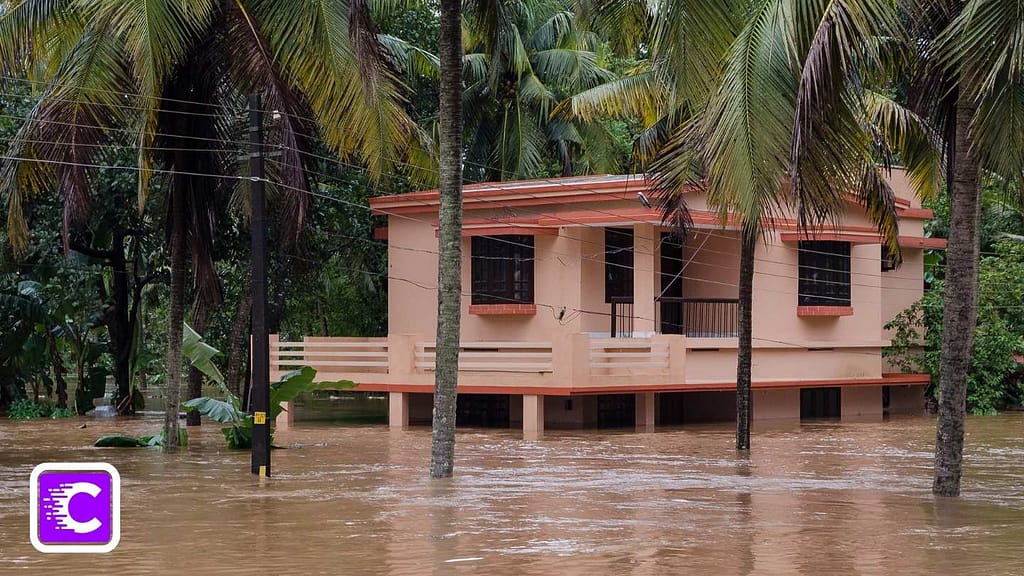
27. Plantation Industry Losses: The plantation industry faced substantial losses during the floods, with estimated losses exceeding ₹1,000 crore.
28. Paddy Cultivation Impact: The floodwaters submerged countless acres of cultivated fields, leading to significant losses in paddy cultivation in regions like Kuttanad and Upper Kuttanad.
29. Landslide Consequences: Landslides in Wayanad, Palakkad, and Idukki districts left fields covered with mud, making cultivation impossible for the next season.
30. Plantation Sector Losses: The plantation sector reported losses exceeding ₹800 crore, affecting crops like rubber, cardamom, coffee, and tea.
Read Also: 100 Interesting Facts about Kerala State (History, Culture, and More)
31. Rehabilitation Plan: The Kerala government introduced “Punargesham,” a comprehensive rehabilitation strategy aimed at reconstructing infrastructure and aiding those affected by the floods.
32. Environmental Factors: Environmental specialists linked the severity of the floods to unchecked urbanization, deforestation, and inadequate waste management practices within the state.
33. Disaster Lessons: The Kerala floods underscored the necessity for enhanced disaster readiness, advanced warning systems, and improved coordination among agencies involved in disaster management.
34. Dam Shutter Controversy: Opening dam shutters by the Kerala government during rising water levels sparked controversy, facing criticism for potentially worsening floods in certain regions.
35. Recovery Costs: The Post Disaster Needs Assessment (PDNA) report projected Kerala’s total recovery expenses to be approximately ₹31,000 crore ($4.4 billion), with the housing sector bearing the brunt of the devastation.
36. Role of Kerala Diaspora: The Kerala diaspora, represented by expatriate Keralites, significantly contributed to fundraising activities, with organizations like the UAE-based Pravasi Sangham collecting millions of dollars for relief and rehabilitation initiatives.
37. Infrastructure Vulnerability: The floods exposed Kerala’s infrastructure vulnerability, especially in urban zones, where haphazard development and inadequate drainage systems intensified the crisis’s impact.
38. “Rebuild Kerala” Initiative: The Kerala government introduced the comprehensive “Rebuild Kerala” project, aimed at reconstructing infrastructure, residences, and other amenities with disaster-resilient features integrated.
39. Environmental Concerns: The floods spurred discussions on the necessity for enhanced environmental conservation and sustainable development practices in Kerala, emphasizing the safeguarding of ecologically sensitive regions and preserving natural resources.
40. Disaster Preparedness: The floods emphasized the significance of disaster preparedness, advocating for bolstering early warning systems and enhancing coordination among various government bodies and stakeholders involved in disaster management activities.
41. Unity Amid Crisis: Kerala residents showcased remarkable resilience and unity, transcending religious, caste, and political divides, garnering widespread praise and inspiring recovery endeavors.
42. Waste Management Concerns: The floods underscored the necessity for improved waste management practices in Kerala, with improper solid waste disposal identified as a contributing factor exacerbating urban flooding.
43. Call for Climate Action: The 2018 Kerala floods acted as a clarion call for the state and the nation to prioritize disaster risk reduction and climate change adaptation measures, recognizing the heightened likelihood of more frequent and severe extreme weather events due to the effects of global warming.
44. Power Supply Disruption: The power supply system in Kerala was disrupted due to floods, with thousands of transformers turned off to avoid danger.
45. Electricity Disconnections: An estimated 25 lakh people lost electricity connections during the floods in Kerala.
46. Electricity Board Loss: The electricity board incurred a revenue loss of around ₹470 crore due to flood-related damages in Kerala.
47. Power Restoration Efforts: Relief efforts included restoring power connections through temporary systems and prioritizing safety measures in public facilities to facilitate recovery post-flood in Kerala.
48. District Damages: Damages were reported in various districts like Thiruvananthapuram, Kollam, Pathanamthitta, and Alappuzha due to overflowing rivers and waterways.
49. Thiruvananthapuram Rescue: In Thiruvananthapuram district, places like Jagathi, Killipalam, and Attakulangara were flooded but rescue efforts yielded significant results.
50. Kollam Relief Efforts: Kollam district reported 44 flood-affected villages with relief camps accommodating thousands of displaced individuals and families.
51. Pathanamthitta Impact: In the Pathanamthitta district, areas like Ranni, and Chengannur Pandanad were mostly affected by the floods with substantial water releases from dams impacting surrounding regions.
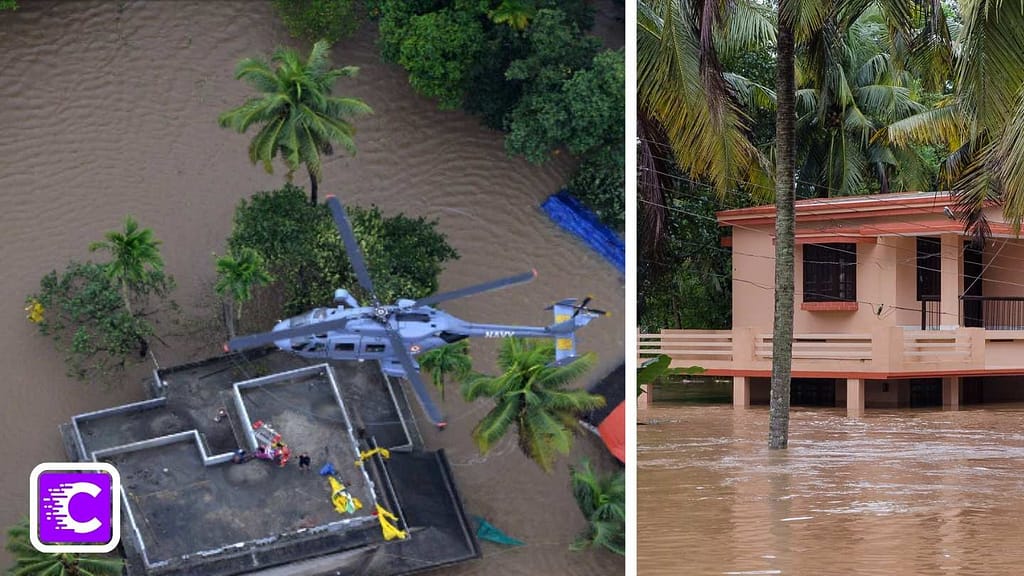
52. Thiruvalla and Pulikkeezha Flooding: Traffic disruptions and submerged areas were reported in Thiruvalla Pulikkeez and Veeyapuram due to flooding in Pathanamthitta district.
53. Alappuzha Challenges: The Alappuzha district experienced overflowing dams and streams leading to water entering the city with significant relief efforts undertaken by authorities and voluntary organizations.
54. Relief Camps in Alappuzha: Around 700 relief camps were opened in the Alappuzha district accommodating thousands of families affected by flooding.
55. Aerial Surveillance: Aerial surveillance was conducted by Prime Minister Narendra Modi and Union Defense Minister Rajnath Singh to assess flood impacts in Kerala.
56. Infrastructure Destruction: The flood disaster resulted in widespread destruction of infrastructure including roads, bridges, train services, and disruption of air transport services in Kerala.
57. Human Impact: The floods affected over 10 lakh people and resulted in more than 330 fatalities across various districts in Kerala.
58. Animal Rescue Directive: Relief efforts included the instruction to rescue animals by the Malappuram District Collector and District Police Chief during rescue operations post-flood.
59. Animal Cremation: Cremation of thousands of birds and animals was carried out following the floods with significant losses reported in livestock numbers and breeding values.
60. Farmers’ Livelihoods: The torrential rain and floods impacted farmers’ livelihoods, destroying crops and making future cultivation uncertain in many areas.
61. Plantation Sector Losses: The plantation sector suffered substantial losses exceeding ₹800 crore, affecting crops like rubber, cardamom, coffee, and tea.
Bottom Line
I hope the facts discussed in this post on facts about Kerala flood 2018, were helpful to you. Please consider sharing it with your family members and friends. Thanks for reading!



